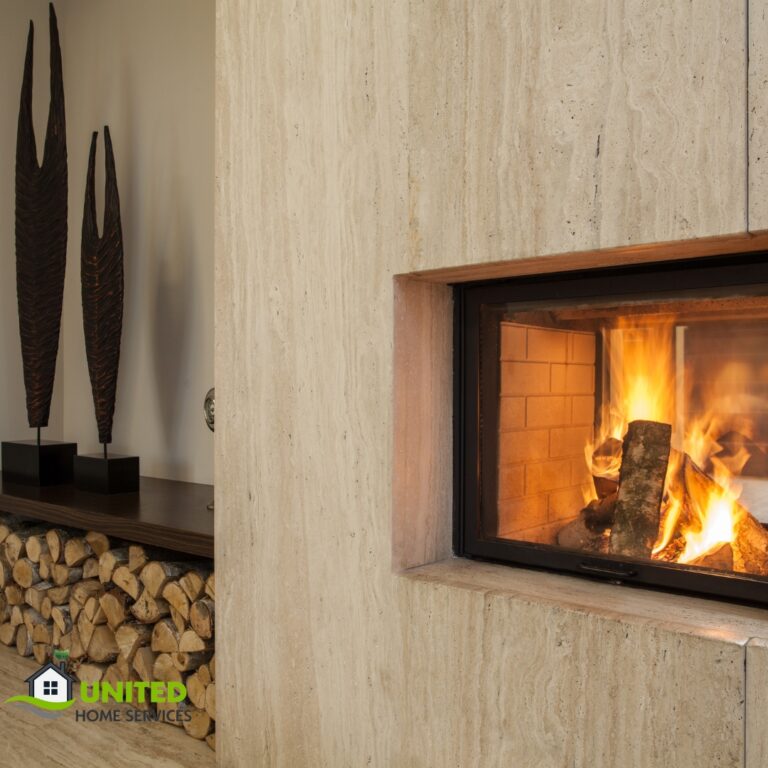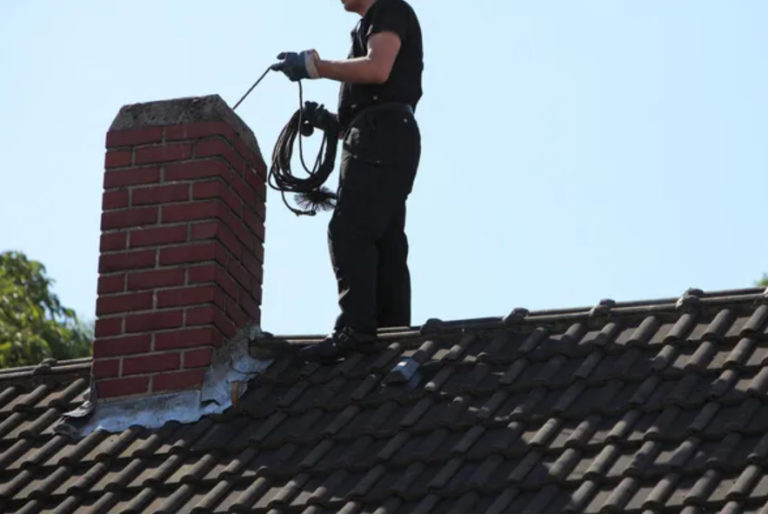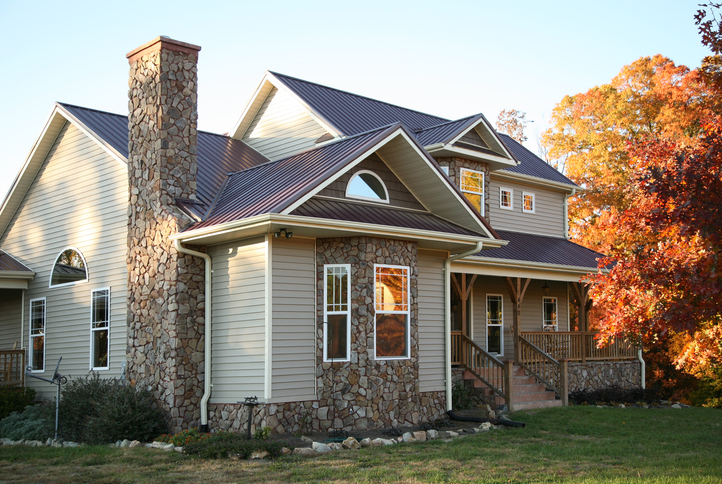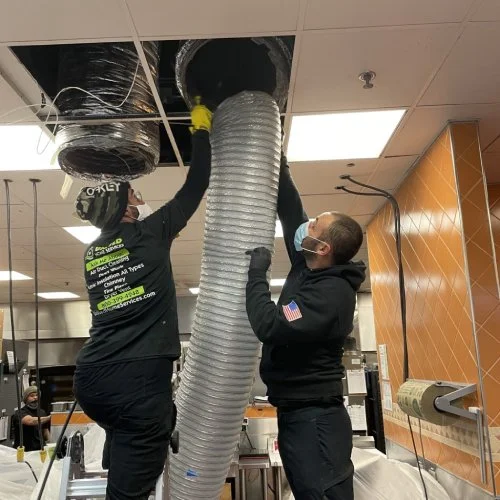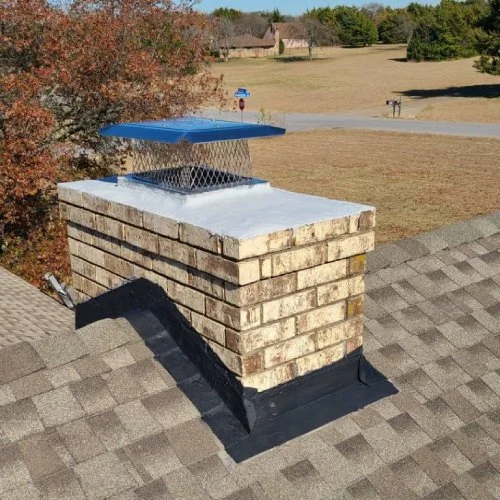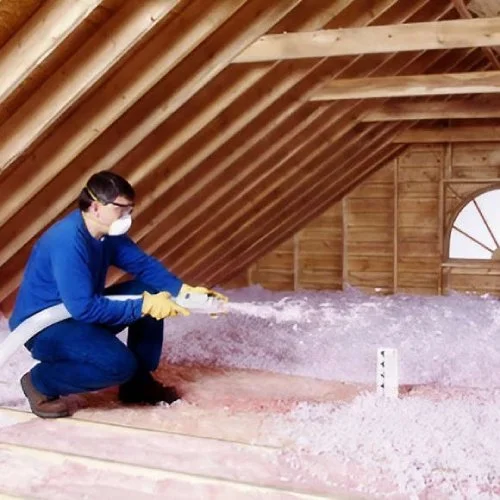Chimney sweeps are professionals who specialize in cleaning and maintaining chimneys. They use a variety of techniques and tools to remove debris, such as soot and creosote, from the inside of the chimney. A professional chimney sweep helps to ensure that the chimney is working properly and safely and reduces the risk of a fire.
How Does The Chimney Sweeps Work
Chimney sweeps are professionals who specialize in cleaning and repairing chimneys to ensure that they operate safely and efficiently. In this article, we will explore the special inner workings of chimney sweeps and how they carry out their essential tasks.
Basic Chimney Sweep Tools
Some of the most common pieces of equipment in a chimney sweep’s arsenal are brushes and rods. We attach a brush to the end of a long, extendable rod and insert it into the chimney, then move the rod in a circular motion to assist the brush in removing any debris from the walls of the chimney. The rods are extended to reach the entire length of the chimney, making sure all debris is removed and your chimney is left clean and safe.
Another tool we utilize is an industrial vacuum specifically designed to remove any of the debris we remove with our brush. This vacuum is attached to the top of the chimney and when it is turned on, it sucks up any loose soot or creosote scrubbed from the walls of your chimney during the previous step.
Chemical Cleaners
In addition to the basic tools and techniques mentioned above, chimney sweeps may also use chemical treatments, such as a creosote remover, to remove tough creosote buildup. Don’t let the words “chemical treatment” alarm you! While they may do a number on the buildup we are aiming to remove, they are an industry standard and are thus safe for your home and those who live within it.
These treatments are typically poured into the chimney and left to sit for a certain amount of time so they can loosen up and build up before we remove them. After the cleaning process is complete, the chimney sweep will typically inspect the chimney again to make sure it is clean and in good working condition. If any issues are identified during the inspection, the chimney sweep will recommend repairs or other services as needed.
Hire United Home Services For Your Next Chimney Sweep
Cleaning a chimney involves a brief chimney inspection, removal of debris with the use of brushes, rods, vacuums, and chemical treatments if needed, and a final inspection to ensure the chimney is clean and in good working condition. Hiring a professional chimney sweep is crucial because only we have the necessary equipment to get the job done safely and effectively.
United Home Services is a reputable home services company that offers professional chimney sweeping services to keep the homes of our clients safe, clean, and healthy!
But you may still be asking, “how often should I sweep my chimney?” Though we recommend that homeowners have their chimneys inspected and cleaned on an annual basis, you should check out our blog on the subject to learn about the other factors that will impact your chimney maintenance schedule.
If you want to ensure the safety of your home and family, please consider contacting the pros at United Home Services to schedule a chimney cleaning. Our friendly and experienced team will be happy to answer any questions you may have and provide you with a free estimate for whichever services you may be interested in.
- Chimney Sweep in Addison, TX
- Chimney Sweep in Allen, TX
- Chimney Sweep in Anna, TX
- Chimney Sweep in Arlington, TX
- Chimney Sweep in Balch Springs, TX
- Chimney Sweep in Bedford, TX
- Chimney Sweep in Benbrook, TX
- Chimney Sweep in Blue Mound, TX
- Chimney Sweep in Blue Ridge, TX
- Chimney Sweep in Carrollton, TX
- Chimney Sweep in Cedar Hill, TX
- Chimney Sweep in Colleyville, TX
- Chimney Sweep in Copeville, TX
- Chimney Sweep in Coppell, TX
- Chimney Sweep in Crowley, TX
- Chimney Sweep in Dallas, TX
- Chimney Sweep in Dalworthington Gardens, TX
- Chimney Sweep in DeSoto, TX
- Chimney Sweep in Duncanville, TX
- Chimney Sweep in Euless, TX
- Chimney Sweep in Everman, TX
- Chimney Sweep in Fairview, TX
- Chimney Sweep in Farmers Branch, TX
- Chimney Sweep in Farmersville, TX
- Chimney Sweep in Forest Hill, TX
- Chimney Sweep in Fort Worth, TX
- Chimney Sweep in Frisco, TX
- Chimney Sweep in Garland, TX
- Chimney Sweep in Glenn Heights, TX
- Chimney Sweep in Grand Prairie, TX
- Chimney Sweep in Grapevine, TX
- Chimney Sweep in Haltom City, TX
- Chimney Sweep in Haslet, TX
- Chimney Sweep in Hurst, TX
- Chimney Sweep in Hutchins, TX
- Chimney Sweep in Irving, TX
- Chimney Sweep in Josephine, TX
- Chimney Sweep in Justin, TX
- Chimney Sweep in Keller, TX
- Chimney Sweep in Kennedale, TX
- Chimney Sweep in Lancaster, TX
- Chimney Sweep in Mansfield, TX
- Chimney Sweep in McKinney, TX
- Chimney Sweep in Melissa, TX
- Chimney Sweep in Mesquite, TX
- Chimney Sweep in Murphy, TX
- Chimney Sweep in North Richland Hills, TX
- Chimney Sweep in Plano, TX
- Chimney Sweep in Princeton, TX
- Chimney Sweep in Prosper, TX
- Chimney Sweep in Red Oak, TX
- Chimney Sweep in Rendon, TX
- Chimney Sweep in Richardson, TX
- Chimney Sweep in Rowlett, TX
- Chimney Sweep in Sachse, TX
- Chimney Sweep in Saginaw, TX
- Chimney Sweep in Southlake, TX
- Chimney Sweep in University Park, TX
- Chimney Sweep in Watauga, TX
- Chimney Sweep in White Settlement, TX
- Chimney Sweep in Wylie, TX

